If you are coming to town with the idea of seing something different than the usual touristical highlights like Brandeburg Gate and – well, that’s it more or less – we have some suggestions for a Top 10 of “ must-sees-off-the-beaten-tracks“ to make…
Baumhaus Fischerinsel | Treehouse Fischerinsel
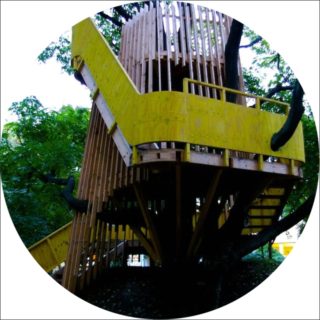
Dieses Baumhaus ist nicht leicht zu finden, hat aber nichtsdestotrotz schon einige Architekturpreise abgeräumt. Ein Werk der aufstrebenden Legeer Architekten, ist es komplett aus Holz gefertigt und passt sich perfekt dem Fundament gebenden Baum an. Es befindet sich auf der Fischerinsel in Mitte und zwar auf dem Spielplatz zwischen den beiden Hochhäusern. Ist man schon mal da, sollte man sich auch gleich noch das Bootsmuseum ganz in der Nachbarschaft anschauen.
This Treehouse is hard to find, nevertheless it has won several prices for architecture already. It’s a work of emerging architects Legeer made completely ou of wood and matches perfectly with the tree as its basement. You can find it at Fischerinsel in district Mitte at the playground between the two apartement towers. If you are around you might also visit the Boat Museum in the direct neighbourhood.
https://baumhaus-fischerinsel.com/
Sowjetisches Ehrenmal | Sowjet War Monument (Treptower Park)
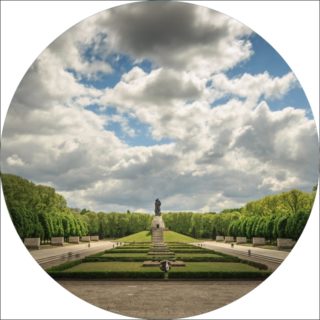
Das Sowjetische Ehrenmal im Treptower Park (auch Treptower Ehrenmal) ist eine Gedenkstätte im Treptower Park in Berlin. Die im Mai 1949 fertiggestellte Anlage wurde im Auftrag der sowjetischen Truppen errichtet, um die im Zweiten Weltkrieg gefallenen Soldaten der Roten Armee zu ehren. Über 7000 der in der Schlacht um Berlin gefallenen Soldaten sind hier bestattet. Die zum Monument gehörende Statue ist mit Hügel und Sockel insgesamt 30 Meter hoch.
http://www.visitberlin.de/de/ort/sowjetisches-ehrenmal-treptow
Futuro House
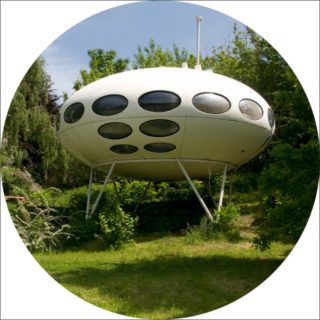
Off-the-beaten-path architectural buffs will delight in catching a glimpse of Berlin’s only UFO, more accurately known as one of the world’s 96 Futuro Houses. It was the brainchild of Finnish architect Matti Suuronen, designed in 1968 at a moment when the belief in the transformative power of technology combined with a fascination in outer space and an increase of leisure time.
The result was the Futuro house: a prefabricated, mass-produced flying saucer living complex for the future, which could even be delivered right to your home via helicopter. The Futuro houses became a brief international phenomenon. Playboy magazine featured a Futuro as a bachelor pad in a photo layout, and The New York Times on the day of the first moon landing announced the Futuro’s arrival in America. However, the Futuro dream came to an end by the mid 1970s, when the Oil Crisis pushed the price of the house, made out of polyester plastic and fibreglass, up too high for the average buyer.
Berlin’s Futuro, the 13th, is currently a private house. However, interested visitors can gaze at it from across the Spree or hop on one of Berlin’s few public ferries to get a closer look.
Address: Blockdammweg and Köpenicker Chaussee, near the former radio station of the GDR (Gelände des Rundfunks der DDR) in Nalepastraße. (On Google maps, search for ‚Futuro haus‚ for an exact view)
Website: www.thefuturohouse.com
Flughafen Tempelhof | Former Airport Tempelhof
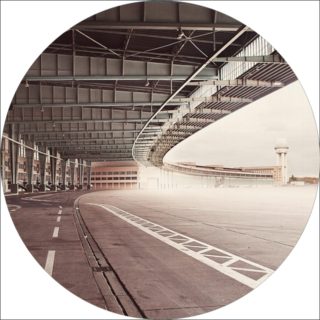
Ursprünglich war das Tempelhofer Feld ein Parade- und Exerzierplatz. Am Wochenende und an Feiertagen – sobald das Militär den Platz räumte – strömten die Berliner zu Tausenden von Berlin nach Tempelhof, um dort ihre Freizeit zu verbringen. Ganze Familien kamen mit Fresskörben, Liegestühlen und Sonnenschirmen, um dort zu picknicken.
Anfang der 1920er Jahre entstand dort der Flughafen Tempelhof. Nach der Schließung des Flughafens im Jahr 2008 hat Berlin die 386 Hektar große Freifläche und eines der größten Gebäude der Welt in zentraler Lage für die öffentliche Nutzung zurückgewonnen. Heute bietet das Areal eine sechs Kilometer Fahrrad-, Skater- und Joggerstrecke, zweieinhalb Hektar Grillfläche, eine rund vier Hektar große Hundewiese sowie einen riesigen Picknick-Bereich.
Insgesamt reicht die Geschichte des Tempelhofer Feldes mehr als 700 Jahre zurück. Tempelhof, dieser Name verweist auf einen Ordenssitz der „Tempelritter“. Ob als Paradeplatz des Soldatenkönigs im 18. Jahrhundert oder als Landeplatz unter Kontrolle der alliierten Schutzmächte Berlins nach dem 2. Weltkrieg bis in die 1990er Jahre – fast durchgängig wurde das Feld militärisch genutzt. Und noch schlimmer: Nach der großen Propagandakundgebung am 1. Mai 1933 wurde im „Columbiahaus“ am Nordrand des Feldes von den Nationalsozialisten das einzige offizielle Konzentrationslager der SS auf Berliner Stadtgebiet eingerichtet und in einem Barackenlager mussten Zwangsarbeiter für die Kriegsproduktion arbeiten.
Aber während der Berlin-Blockade 1948/49 versorgten dann die West-Alliierten die Bevölkerung hier über die legendäre „Luftbrücke“ mit allem Überlebensnotwendigen.
Neben den geführten Touren informiert ein Informationspfad mit 20 Erinnerungs- und Gedenkorten auf dem Tempelhofer Feld in Text und Bild zur Geschichte des Ortes.
Airports can be pretty impressive spaces, but what good is it if you can’t run wild in them? Well, in Berlin, you can do just that…
Sitting smack in the middle of the city, one of Europe’s most iconic pre-World War II airports sat abandoned for several years after its closure in 2008. Today it is officially Berlin’s largest park since its reopening in 2010, making it one of the world’s largest free inner city spaces, ideal for biking, skating to baseball, kiting, festivals, music events and even urban farming. The indoor terminal and some of the hangars are also open for wandering around its vast space. Even larger than New York City’s Central Park, Tempelhof measures in at 909 acres.
Conceived by leaders of the Third Reich, the airport was completed in 1927 and while it was still in open, it was cited as the world’s oldest commercial airport still in operation. Tempelhof Airport’s main building was once among the top 20 largest buildings on earth; in contrast, it formerly had the world’s smallest duty-free shop.
In the mid-1930s, the Nazi government began a massive reconstruction of the terminal but plans to upgrade their architectural testament to German supremacy took a back seat when they lost the war. Soviet forces captured Tempelhof in the Battle of Berlin in 1945. The Russians combed through the old and the new terminal searching for treasures, opening all the rooms to find hidden places and documents.
The airport was later turned over to American forces following the Conference at Yalta, and then serving as West Berlin’s lifeline to the free world during the Cold War, the airport was a central set piece in 20th century history. And today park visitors can just casually take a stroll in it. With the fall of the Berlin Wall and the reunification of Germany, the U.S. Army closed its Berlin Army Aviation Detachment at TCA in 1994, ending a 49-year American military presence in Berlin. When the city airport ended flight operations in 2008, its commercial use was mostly in the form of small commuter aircraft flying regionally.
Today, Berlin-Tempelhof Airport stands as both a monument to a darker era in Germany’s past and a link to its future. Dubbed by Norman Foster as the “The Mother of all Airports”, take a virtual visit to the unusual space…
http://www.thf-berlin.de/fuehrungen/
Design Panoptikum
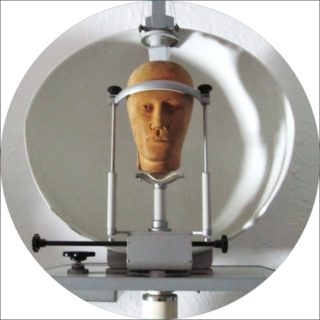
A step through the doors of Design Panoptikum, a Museum of Extraordinary Objects, is a step into a wonderfully unnerving world of retro-tech attached to body parts, and medical equipment paired with common items from eras spanning past and future. Troubling imagery coupled with a self-described “space carnival atmosphere” lends to a spooky yet whimsical world of doll-like mechanical monsters and a place where people seem to have been put together with spare parts. Lounging on rare furniture under a substantial collection of bizarre lamps, these eerie figures and their surrounding furnishings are designed from historical objects from aviation, the medical field, the film industry and more. Owner Vlad will, if you’re lucky, give you a personal tour of his half design museum, half horror house of imagination.
Spreepark (Plänterwald)
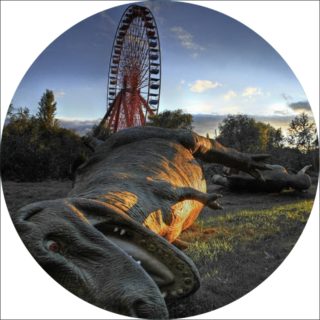
Der Spreepark Berlin war ein Vergnügungspark im Norden des Plänterwaldes im Berliner Bezirk Treptow-Köpenick. Er wurde 1969 unter dem Namen Kulturpark Plänterwald eröffnet und war mit jährlich etwa 1,7 Millionen Besuchern der einzige Freizeitpark der DDR. Nach der politischen Wende wurde der Spreepark seit 1991 zu einem Freizeitpark nach westlichem Vorbild umgestaltet, hatte aber besonders ab 1999 mit wirtschaftlichen Schwierigkeiten zu kämpfen; die Besucherzahlen brachen auf zuletzt 400.000 jährlich ein. Seit der Insolvenz des Betreibers und der Schließung 2002 liegt das Gelände brach und erlebte eine populärkulturelle Mythisierung. 2014 wurde es vom Land Berlin zurückgekauft, derzeit wird über neue Nutzungsformen und eine zeitnahe Wiedereröffnung heiß diskutiert.
Seit Ende Juli 2016 gibt wieder Führungen über das Gelände. Diese finden nicht ganzjährig, an unterschiedlichen Wochentagen, erst 1x am Tag, manchmal 2x am Tag, zu unterschiedliche Uhrzeiten, … statt. Aus diesem Grund können wir hier keine genauen, aktuellen Informationen auf der Spreepark-Fanseite zur Verfügung stellen. Anfragen: spreepark@berliner-spreepark.de
Monster Kabinett | Monster Cabinet

Created and maintained by an art collective known as the Dead Chickens Collective, the Monster Kabinett is a warehouse full of strange art and costumed revelers, all waiting to put on a show each Thursday and Friday night. Good luck trying to figure out which creations are human and which are simply moving metal masterpieces.
Visitors are confronted with the stuff of nightmares, from skittering arachnoid robots to leering, malformed sculptures to aggressive actors straight out of a haunted house. Except this haunting is year-round. The journey to the Monster Kabinett is a fitting one as well, down a dank alley off of a bustling city street. Most patrons are unsure of whether they’ve reached the right location until they’re directly in front of it, often greeted by a good-natured but somewhat off-key member of the collective.
The gallery is safe, of course, but built to instill and inspire as much fright and dread as possible. And rest assured, the Dead Chickens Collective does that part very well. The Monster Kabinett better seen than heard, which is why their website is built as more of a tour than a repository of dry information. And really, what information about the gallery is necessary? It’s best left a mystery until you experience it first-hand.
http://www.monsterkabinett.de/
Ehemalige Abhörstation Teufelsberg | Former Spionage Towers Teufelsberg (Devil’s Mountain)
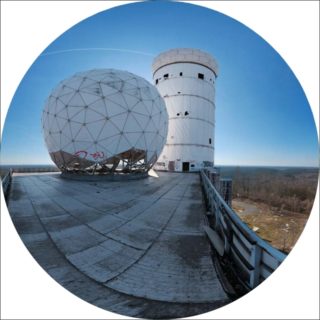
Dieser Ort ist mittlerweile kein richtiger Geheimtipp mehr, spätestens da er in praktisch jedem Reiseführer als Geheimtipp geführt wird. Doch die ehemalige Abhörstation der Amerikaner und Briten aus dem Kalten Krieg versprüht nach wie vor eine außergewöhnliche, apokalyptische Atmosphäre! Ganz zu schweigen von der unschlagbaren Aussicht über die gesamte Stadt. Liest man dann noch davon, dass David Lynch den Ort einst kaufen wollte, um eine Art Sektenhauptquartier zu gründen, wird alles gleich noch etwas spannender! Statt wie so viele andere Besucher brecht bitte nicht in das Gelände ein. Das Reparieren des Zauns kostet ständig unnötig Geld, und auf einer der geführten Touren erfährt man sowieso viel mehr!
This Site isn’t a real secret tip any more as it appears in nearly every tourist guide as a „secret tip“. But the former communications intercept station of the US and British military – a remain from the Cold War – provides you with an extraordinary, apocalyptic athmosphere! Not to mention the splendid view over the whole city. If you than read that David Lynch had made up his mind once to buy the whole place to set up some kind of headquarter for some obscure church the story gets even more exciting. But please don’t crack into the site as many other visiter do. Repairing the fence is expensive and the friendly owner hasn’t earned to cover the costs at all! Guided tours are available and much more exploratory.
http://neue.teufelsberg-berlin.eu/
